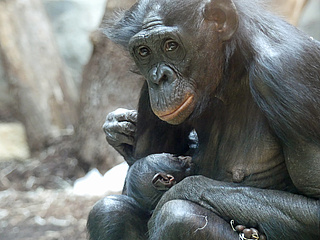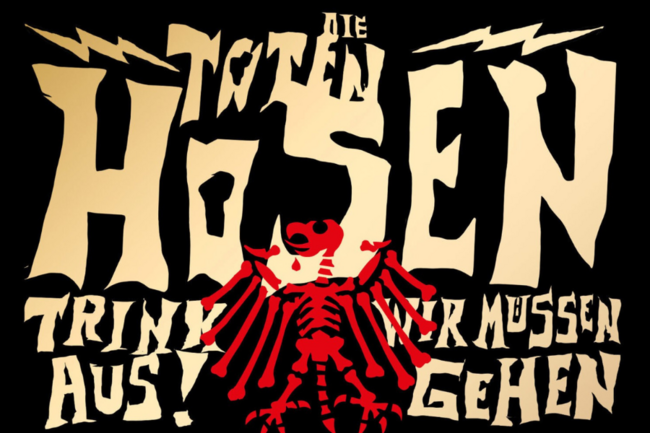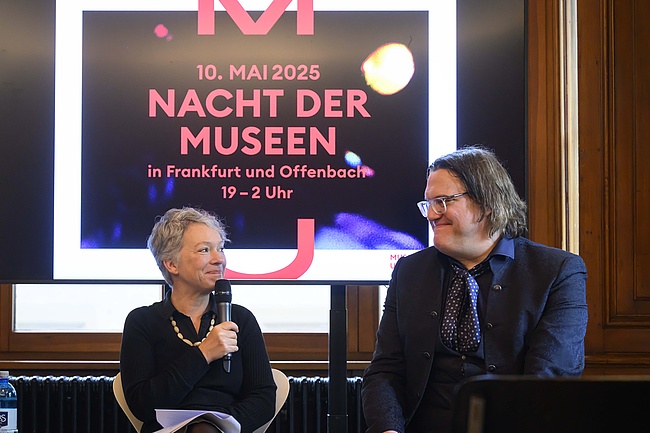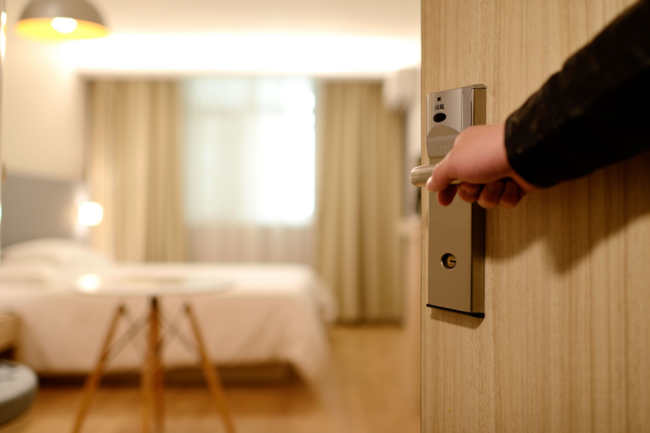Sunday morning, September 24, a male bonobo was born in the Borgori Forest, the zoo's great ape house. "I am very pleased that there are now again offspring among the popular bonobos," says Ina Hartwig, Head of Department for Culture and Science. "This continues the remarkable tradition that Frankfurt Zoo established in 1962 with the world's first breeding of bonobos in human care, and makes another valuable contribution to species conservation in light of the severe threat to these great apes."
The Frankfurt bonobo group, consisting of ten females and seven males, is a total of 17 animals strong with the new addition.
"You still have to look very closely and have a bit of luck to get a glimpse of the young animal, as it clings tightly to its mother's fur for the first few months," explains zoo director Christina Geiger. "In addition, eleven-year-old Nayoki, who is having her first offspring, is very protective. The young animal, which is only a few days old, is well cared for by her, it is lively and drinks regularly. We can't say for sure who the father is," Geiger explains. Four males are possible. Mother Nayoki came to Frankfurt in July 2020 from the Wild Animal Park Mechelen in Belgium, where she was also born.
Despite their enormous threat - since 1996, the species, which is only found in the Democratic Republic of Congo in Central Africa, has been considered critically endangered according to the IUCN - bonobos are rather rarely seen in zoos. However, Frankfurt Zoo has always played an important role in keeping and breeding the smallest ape species. In January of this year, female bonobo Margrit died here; at over 70 years old, she was the oldest bonobo in captivity up to that time.
Since 2007, the Frankfurt Zoological Society (ZGF) team has been researching and documenting the region in and around Lomami National Park in the DR Congo. The national park covers an area of nearly 9000 square kilometers and is the heart of the 40,000 square kilometer natural landscape between the Tshuapa, Lomami and Lualaba rivers. The region is almost entirely covered by dense tropical rainforest, home to bonobos as well as forest elephants, giant pangolins and okapis.
The data collected will be used to better understand where different animal populations reside and to further protect the park.
The Conservation Podcast informs
For more on this topic, check out "Behind the Zoo Goes On - The Zoo and ZGF Conservation Podcast." Episode 32 of the podcast is entitled "Bonobos: resourceful hide-and-seekers in the rainforest - in search of our closest relatives".
Bonobos are among our closest relatives, along with chimpanzees. Some time ago, a mirror was literally held up to the bonobos at Frankfurt Zoo in the service of science. In this episode, host Marco Dinter finds out what bonobo Margrit thought of it from keeper Thomas Kempf.
Daniel Rosengren knows what hardships you have to take on to observe bonobos in the wild. The ZGF photographer visited Lomami National Park in the DR Congo and actually got them in front of his lens.
You can find the article on the websites of Zoo und ZGF and everywhere podcast is available.












